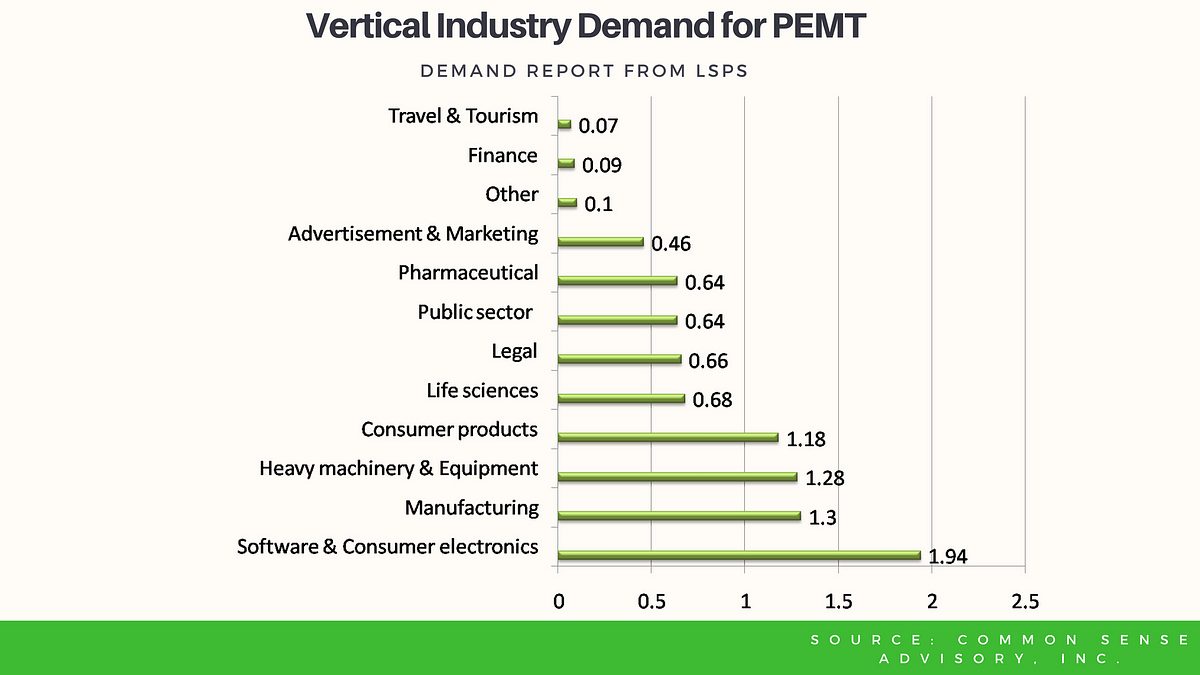
Is post-editing a must-have or a nice-to-have?
Translation, just like any other industry, is seeing rapid growth in technology. According to CSA, machine translation is a controversial topic in our field. With the drive for greater output, lower costs, and market pressures rising, many translation companies are being forced to conduct post-editing.
Post-editing is the process of editing automatic translations.
CSA’s survey of language service providers and machine translation providers has shown that post-edited machine translation (PEMT) is a rapidly growing segment in our industry. The findings include:
- PEMT is offered by nearly half of the survey’s respondents and will soon become a majority solution.
- Small LSPs are leading PEMT growth
- LSPs are struggling to meet the rapid increases in demand
- IT is the biggest PEMT consumer with heavy machinery, manufacturing, and the consumer products fields catching up
- According to the CSA, most PEMT providers are currently based in Europe, with Southern Europe making up 69%.
What’s more, post-editing can save up to 40% on time. Web-based translation tool, Memsource, claims that 50% of translations between Spanish, French, and English have been done on its platform. To date, post-editing has also been performed via translation crowdsourcing portals. One such site, Unbabel, claimed to have post-edited more than 11 million words.
There are time and place for post-editing
Right now, machines cannot replace human translators. But, there’s no denying that machines exist and more and more translators and agencies are making use of them for post-editing.
Post-editing, as it stands, has a time and a place. For instance, technical and scientific documents with limited vocabulary will benefit from automatic translation. By limited vocabulary, we’re talking about how many meanings a word may have. The technical and scientific fields are highly complex, and the higher the complexity, the more specific the translation of certain words has to be. In this case, a translation machine is more likely to select the right word than a human linguist.
On the opposite side of the spectrum, there are certain kinds of texts that are not at all suitable for machine translation, including literary works such as novels and poems. Literary works require specific interpretive qualities and a key element in literature, specifically, is the author’s intention. In this case, post-editing would only end up being a mammoth and complicated task and the entire document would have to be re-translated.
Will post-editing go mainstream?

Should post-editing be a regular occurrence?
We need to decide whether or not post-editing should happen on a regular basis. If we look at the finished product, the task of post-editing should indeed be a regular part of the editing process. It is up to the editor to take the text that has been automatically translated, though, and polish it in the same way they would edit any other translation that has been conducted by a human translator.
Just because a translation is carried out using translation machinery doesn’t mean that the editor should drop the ball on quality. In fact, it becomes more important than ever to pay close attention to editing since translation machinery does not have the capacity to analyze a text.
While the debate over whether post-editing is something that is “nice” to have or something that is a “must” continues, and we continue to adapt to the rapid progress of the industry, we realize that this is a trend that is still in its infancy, especially in terms of industrial translations.
About Wordminds
Wordminds is a close-knit team of language experts – professional translators, project managers, localisation engineers and business visionaries who work closely with global clients, helping them connect with their international audience. Wordminds works with over 3,000 language specialists and subject-matter experts to enable companies to overcome cultural and language barriers, helping them build trust and create long-lasting business and human relationships. Fully certified under ISO 9001 and ISO 17100, the company believes in continuous improvement and so stands at the forefront of new language-technology implementation, smart collaboration and excellent customer service. Find out more about Wordminds.
Join our Newsletter
Stay up to date with the latest articles, news and translation insights


